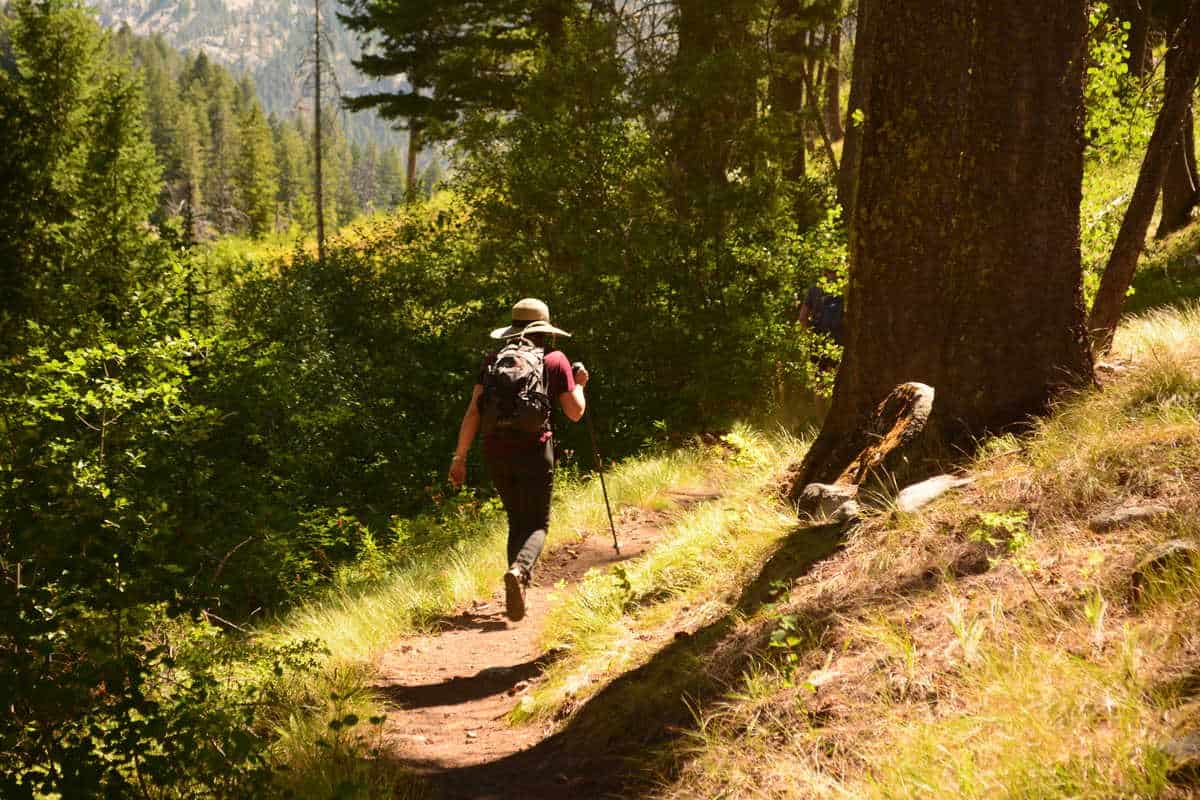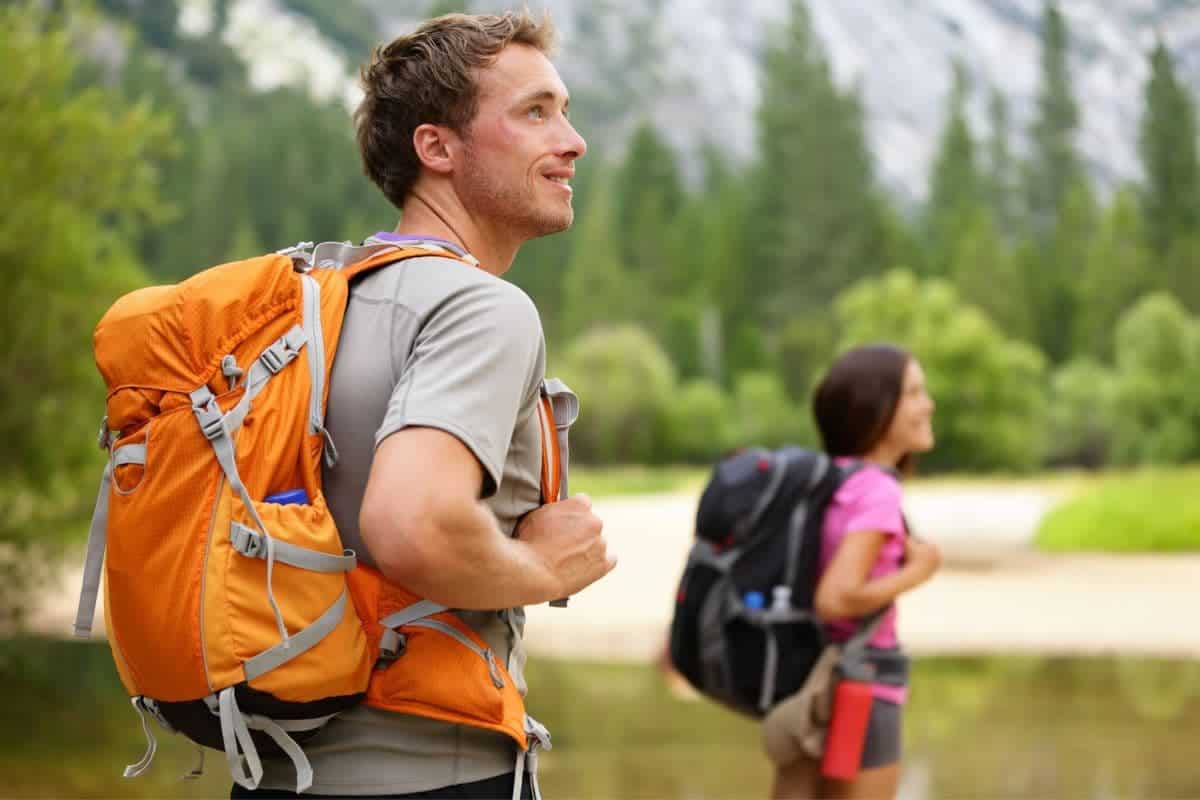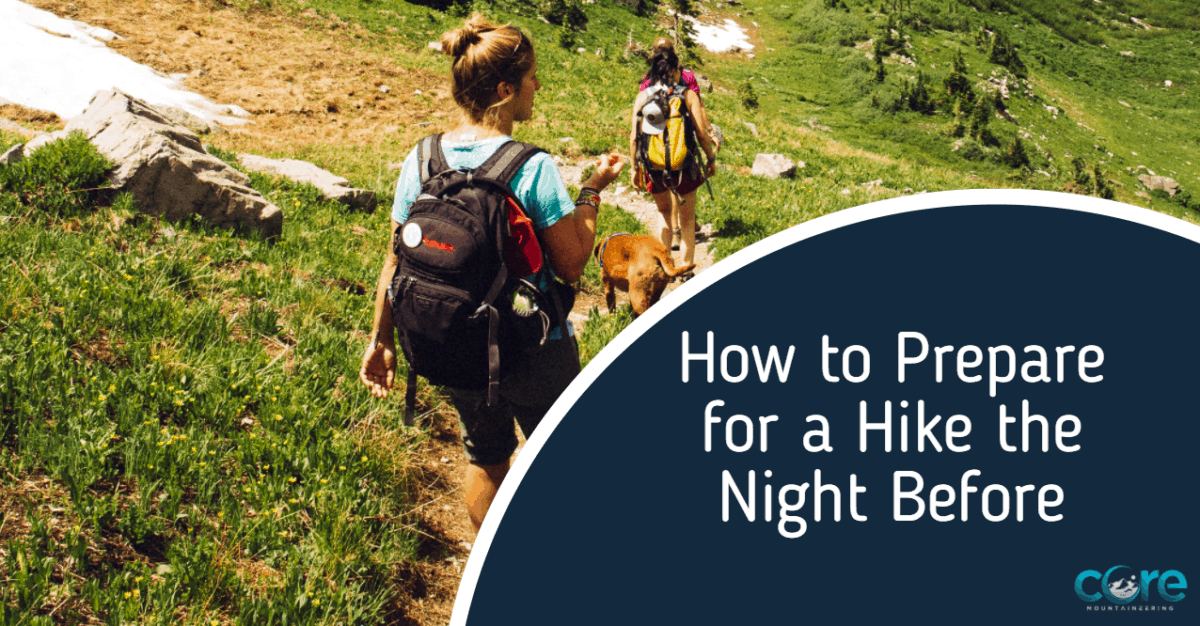This is fantastic; you’re starting your first backpacking trip! You’re going to go on a promising adventure, promising freedom and adventure.
Therefore, it’s necessary to plan and think about your destination, the gear you need, and how to keep well-fed and hydrated.
Mistakes might be part of the journey, but with good preparation and a flexible attitude, they turn into fun learning experiences.
As you gear up, remember it’s all about matching the trip to your fitness, mastering the art of packing, and planning safely through nature’s tranquility.
Key Takeaways
- Planning your backpacking trip involves choosing an appropriate destination, preparing the right gear, and understanding the basics.
- Proper food and water planning is crucial for maintaining energy and hydration on the trail.
- Familiarizing oneself with navigation and safety is essential for a successful and enjoyable backpacking experience.
Understanding Backpacking Basics

Before you set foot on the trail, getting a grasp on backpacking fundamentals is important.
You’ll learn to differentiate backpacking from other outdoor activities, understand various styles of treks, and determine what kind of journey suits you best.
What is Backpacking?
Backpacking is an outdoor activity that combines hiking with overnight stays in the wilderness.
Typical elements of backpacking include carrying all necessary gear in a backpack to sustain you for the duration of your trip, which can range from one night to several months.
Backpacking vs. Hiking vs. Camping
- Backpacking: Involves hiking with a full pack and includes at least one overnight stay. It’s a self-sufficient journey with all your essentials carried by you.
- Hiking: Generally refers to walking on trails for a day or less without the need for an overnight stay.
- Camping: Usually means setting up a campsite at a designated spot and may not involve a significant hike to reach the sleeping area.
Types of Backpacking Trips
- Overnight hikes: Perfect for beginners, these are short one-night escapes that allow you to test your gear and your endurance.
- Thru-hiking: This is a long-distance trail completion, often spanning hundreds or thousands of miles, typically done in one go. This is my favorite way of hiking, but you’ve got to start somewhere.
- Section hiking: Tackling a long trail in smaller, more manageable segments, which can vary in duration.
Choosing Your Destination
Popular Backpacking Locations
The best place to start is what is close to you. But, if you’re looking for the best National Parks, you can work your way up to them.
United States National Parks are a good start. Here are a few that are renowned for their backpacking trails:
- Great Smoky Mountains National Park
- Yosemite National Park
- Rocky Mountain National Park
Determining Trail Difficulty
- Distance: Shorter trails are better for beginners.
- Elevation Gain: Less elevation means an easier hike.
- Terrain: Look for well-maintained paths.
CoreM Tip: Utilize apps such as Gaia GPS to access detailed trail information and assess difficulty levels before heading on your outdoor adventures.
Permit Requirements
Before you get going, check if you need a permit. This is going to depend on your area but here’s the lowdown:
- Backcountry Permits: Often required for overnight stays in national parks.
- Local Regulations: Permit processes vary, so check park websites. Some permits are competitive. Apply as early as you can.
Overall, your unforgettable backpacking trip starts with a destination that suits your style and skill level. Take your time, do your research, and you’ll be on the trail before you know it.
Gear Essentials and Clothing
Before heading out on your backpacking adventure, it’s vital to equip yourself with the right gear and clothing to ensure comfort and safety. Careful selection and understanding the balance between necessity and weight can make all the difference.
Backpacking Equipment List
Here’s a checklist to get you started:
- Backpack
- Tent
- Sleeping Bag
- Sleeping Pad
- Stove
- Headlamp
- Bear Canisters
- First Aid Kit
- Repair Kit
- Water Treatment or Purifier
- Rain Gear
Selecting Proper Clothing
With regards to clothing, layering is key for varying conditions:
- Boots
- Socks
- Base Layers
- Insulating Layer
- Outer Layer
- Hat
- Gloves
- Ultralight moisture-wicking underwear
Rental or Purchase?
Renting equipment is an excellent option for beginners or those wanting to test new gear before making a purchase. You can find rental options at local outdoor gear shops or at retailers like REI.
On the other hand, if you’re looking to own your equipment, consider investing in quality pieces gradually. Begin with essentials such as boots and a backpack. To save money, keep an eye out for end-of-season sales or consider buying gently used gear.
We have a huge guild for renting gear; I called all these places to get an idea of what it costs and what services they offer.
Food and Water Preparation

Meal Planning for the Trail
The requirements for your trip are influenced by factors such as your body size, the duration of your trip, and the physical challenges of the terrain you’ll be crossing.
To get started, here’s a helpful guideline:
| Meal | Recommendations |
|---|---|
| Breakfast | Instant coffee, powdered juice or milk, fruits, instant cereals, nuts, dried fruits, granola bars, protein bars. |
| Lunch | Nut butters, crackers, dried meats or jerkies, durable cheese. |
| Dinner | Dehydrated meals, instant rice, pasta, enough stove fuel for cooking, consider stove weight. |
In bear country, the goal is to leave no trace. Use bear-proof containers or hanging methods to keep both you and the wildlife safe.
Hydration Strategies For Hiking
Always have enough water to get you to the next reliable water source, and pack a bit extra in case of emergencies.
- Drink at least 1 liter of water before hitting the trail.
- Aim to consume about 1 liter every two hours, more if sweating profusely or in hot weather.
- Use a water filter or purification method at available water sources.
Food Storage and Safety
- Carry all wrappers and trash with you.
- Use odor-proof bags and bear containers where required.
- Be mindful of local wildlife and ecosystems; never feed animals and avoid leaving food scraps.
Navigation and Safety
Map and Compass Basics
Obtain a topographic map of your area to gain a clear understanding of the terrain. Alongside this, it’s necessary to learn the basics of map orientation and how to follow a bearing with a compass.
CoreM Pro Tip: Before planning your trip, practice using your gear in a familiar area to ensure you are comfortable and efficient with your equipment setup and usage.
Tech Aids for Navigation
Always have a backup, such as a portable power bank, in case your tech aid fails. While a map and compass are invaluable, technology offers additional layers of safety:
- Devices like Garmin InReach can keep you on track and offer emergency communication.
- Gaia GPS is a user-friendly app for accessing trail information and maps on your smartphone.
Wilderness Safety
To stay safe in the wild:
- Check forecasts and understand weather patterns for your hike duration.
- Read up on the animals you might come across and how to deal with them safely.
If going solo, let someone know your plans and expected return time.
Logistics Planning
Creating a Trip Itinerary
Start by clearly defining your route and camping spots for each day. Use apps or maps to gauge distance and difficulty, and don’t overestimate how far you can hike with a full pack.
Consider these factors:
- Aim for a comfortable distance, especially if you’re new to this.
- Add extra time for climbing steeper sections.
- Plan short breaks every hour to stay fresh.
Here’s a basic itinerary format:
| Day | Destination | Mileage | Elevation Gain | Notes |
|---|---|---|---|---|
| 1 | Camp Alpha | 5 mi | +500 ft | Easy trail |
| 2 | Lake Bravo | 7 mi | +1000 ft | Moderate, views |
| 3 | Exit Point | 4 mi | -600 ft | Mostly downhill |
Transportation and Parking
Work out how you’ll get to and from the trailhead. If it’s a loop, parking at the start works great. For point-to-point hikes, you might need two cars or a shuttle service. Here are some tips:
- Confirm if you need a permit to park at the trailhead.
- Reserve shuttle services ahead of time if available.
- Leave your travel plan with someone and include where your car will be parked.
Managing Group Dynamics
The larger your group, the more complex the logistics can be. Keep group size manageable to simplify planning and minimize environmental impact. Coordinate with your group regarding:
- Pace
- Expectations
- Roles
Practical Tips for Backpacking
Below, you’ll find key advice on packing your backpack, choosing the right campsite, and adhering to minimum impact camping principles, ensuring you leave the wilderness as pristine as you found it.
Packing the Backpack
To start packing your pack, place your sleeping bag at the bottom as this is typically the bulkiest yet lightest item. Use a compression sack to save space. Your tent and sleeping pad should follow, positioned in the middle alongside your food stash, maximizing stability.
Everyday items like snacks, a trowel, toiletries, and rain gear ought to be easily accessible, so pack them near the top or in outer pockets. Additionally, aim to distribute the weight evenly and use internal straps to secure items, preventing movement while you hike.
- Pack moisture-wicking base layers, a warm insulating layer, and a waterproof shell jacket.
- Items like a camp chair may double as a sleeping pad extension.
- Include lightweight, quick-dry towels and biodegradable soap for minimal environmental impact.
Campsite Selection and Setup
When selecting your campsite, aim for existing sites or durable surfaces.
Campsite Criteria:
- At least 200 feet from water sources
- Shielded from the wind
- Flat, with no vegetation to disturb
Ensure your tent is anchored securely, even if the weather seems calm. Always prioritize a spot that offers natural shelter from the elements, and check above for loose branches that may pose a risk.
Lastly, consider proximity to a water source for easy access, but remember to camp at a respectful distance.
Overcoming Common Challenges
Dealing with Bad Weather
Before heading out, check the forecast for your destination and be prepared for the unexpected. Pack a waterproof jacket, and extra layers, and consider a compact emergency shelter. Know your route’s elevation gain, as this can affect the weather you’ll encounter.
CoreM Pro Tip: Before heading out, always check the weather forecast for the duration of your trip to ensure you are prepared for the conditions you will encounter on the trail.
Gear Essentials
- Waterproof jacket and pants
- Warm layers (fleece or synthetic down jacket)
- Emergency shelter (bivy sack or space blanket)
Staying Oriented on the Trail
Always carry a physical map and compass as backups to any digital navigation aids. Furthermore, familiarize yourself with the terrain features using your map and factor in hiking speed and distance to estimate travel time.
Identify natural landmarks and waypoints to help you stay on course.
Encounters with Wildlife
Store your food properly to discourage visits from animals and rodents. Make sure to learn about the wildlife native to your region, and understand the best practices if you meet an animal.
For instance, making noise often keeps larger animals at bay, whereas for bears, you’ll need to know whether to play dead or back away slowly.
For food storage, use bear-proof containers or hang your food out of reach.
Safety:
- Make noise while hiking to alert animals to your presence.
- Understand how to react to different wildlife encounters—information is often available at local ranger stations.
After the Backpacking Trip

Post-Trip Gear Maintenance
- As soon as you get back, unpack all your gear.
- Shake out your tent, sleeping bag, and backpack to remove any dirt, leaves, or tiny uninvited critters.
- Rinse your cookware and water bottles. If your clothing is especially grimy, consider a pre-soak before tossing it in the wash.
- Air-dry everything before storage to prevent mold. Hang tents and sleeping bags in a dry area, not direct sunlight.
- Check all equipment for damage. Make notes of what needs repair or replacement before your next adventure.
| Item | Care Instructions |
|---|---|
| Boots | Clean off mud and dry thoroughly; condition leather if necessary. |
| Pack | Wipe down inside and out; check for tears or strap issues. |
Reflecting on the Experience
- Journaling: Write down what worked well and what didn’t. Were there items you didn’t use? Anything you wished you had brought?
- Map Review: Look over your route on the map. Note any tricky spots or areas you’d like to scout next time.
Compare your experience with the trip reports in guidebooks or online to see if there are tips you missed or can contribute for next time. Next is to identify any skills you need to improve, such as navigation, and consider taking a course or practicing at home.
Sharing Your Adventure
Write a trip report to share on websites or with local hiking clubs. Be specific about conditions, sights, and any challenges you face.
Choose a few stand-out photos to include. You can also mention any particularly good campsites, water sources, or vistas.
Meanwhile, you can also share your highlights and low-lights on your social media channels to inspire and inform your community.
- Hashtags: Use relevant hashtags to help others interested in the same trails find your post.
- Engagement: Respond to questions and comments to foster a community of fellow backpackers.
Final Thoughts – Carefully Plan Your Backpacking Trip With The Right Balance
Starting your first backpacking trip combines careful planning with the excitement of discovery. It’s necessary to choose a destination that fits your skill level, equip yourself with the right gear, and carefully plan your food and water supply.
Ultimately, backpacking is about finding the right balance between what you carry and your ability to travel the wilderness freely.
With the help of this guide, your backpacking journey will become a valuable experience that enriches your life and leaves you with lasting memories.
Do you want to know exactly how to prepare for a hiking trip the night before? If yes, check out our guide here on how to do just that!








